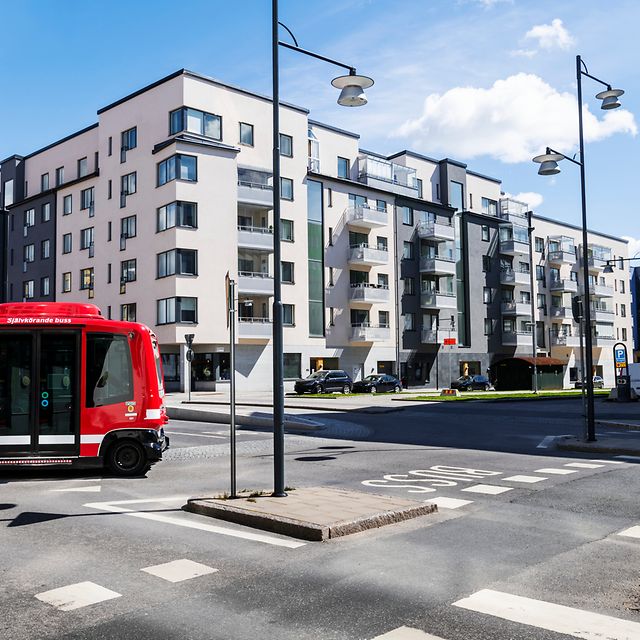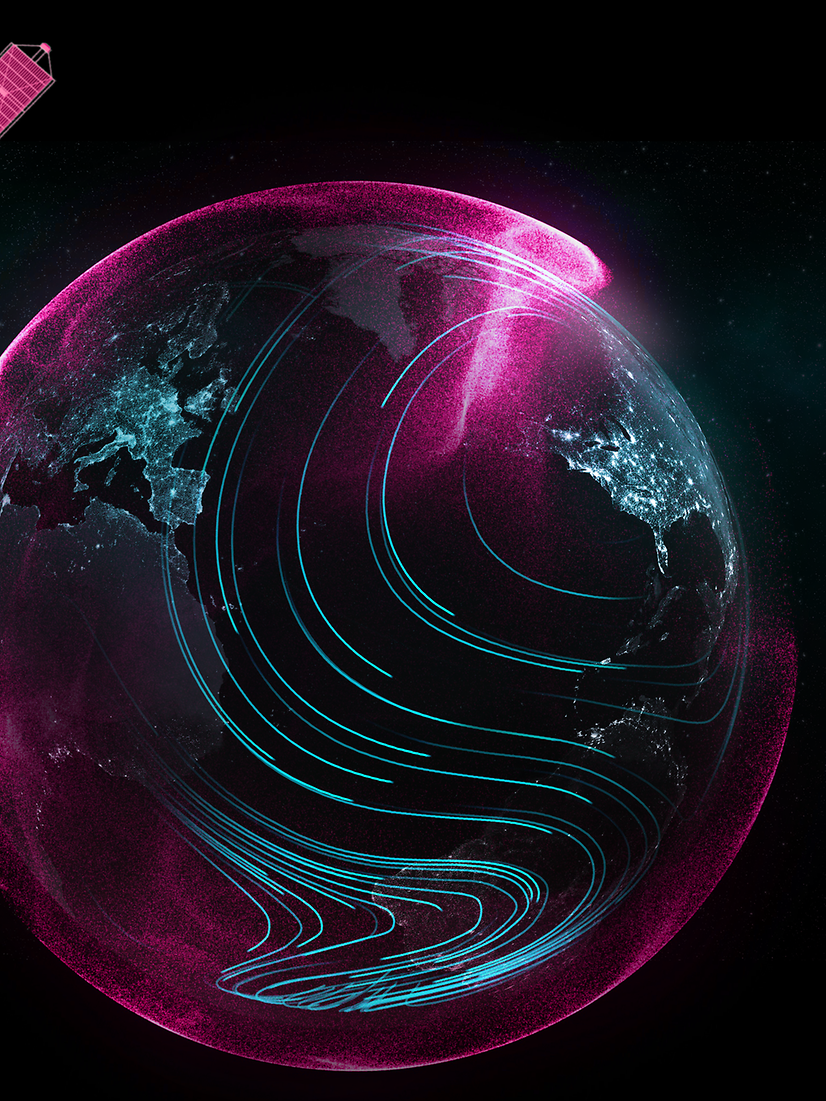Smart parking with AI and IoT: less congestion and CO2
Cleverciti and Telekom are using IoT and AI to optimise the search for parking spaces in cities and increase profitability for parking operators. Find out more now!
Navigation accurate to within four centimeters: How human learner drivers at Smartmoov and autonomous shuttles from Auve Tech benefit from IoT and precise positioning.

Whether it's disregarding right-of-way rules, speeding, or overlooking a road sign: human error is the most common cause of accidents on the road. But thanks to intelligent technology, such mistakes can be avoided. Self-driving and fully connected cars and buses are therefore considered key elements for the mobility of the future. Since 2015, the German Federal Ministry of Education and Research has been funding projects for automated and connected driving with around 100 million euros.
Nevertheless, many developments are currently still encountering technological limitations. Even in poor weather conditions such as heavy rain, fog, and snow, as well as on roads without markings, self-driving vehicles must stay in their lane and be reliably connected. This was a challenge that also faced the developers at Auve Tech.
Simply fill out the contact form – we’ll get back to you as soon as possible.
Since its founding in 2019, the Estonian company Auve Tech has specialized in the construction of driverless vehicles and autonomous systems. Until recently, the company used only LiDAR technology for its self-driving buses. This enabled the shuttles to recognize their surroundings and calculate their own position in order to identify obstacles at an early stage. However, the technology is costly and susceptible to external influences such as bad weather. To address this, Auve Tech has now installed a Precise Positioning GNSS module (PGM) in its shuttles for the first time.
Now, Precise Positioning from Telekom and Swift Navigation supplement GNSS (Global Navigation Satellite System) positioning data with additional correction data. Starling positioning technology and Swift Navigation's cloud-based Skylark correction service enable precise positioning accurate to within four centimeters. The correction service draws on a network of hundreds of measuring stations on several continents and determines local inaccuracies in satellite navigation. Test drives conducted by the company have also shown that the PGM sensor system and the Skylark correction service enable safe and accurate positioning for autonomous navigation, making them an ideal complement to existing LiDar technology. This makes it possible to use the satellite-based IoT technology Precise Positioning as a standalone solution for autonomous driving.
LiDAR (light detection and ranging) systems use laser beams to calculate distance or speed. Autonomous transportation systems use the technology to prevent collisions. In robotics it helps to record surroundings and objects precisely. Auve Tech has been using it for its driverless shuttles. LiDAR enables the driverless bus to recognize its surroundings and calculate its position in relation to other physical objects. The result of these calculations is a high-resolution map that the shuttles used for navigation purposes.
IoT and Precise Positioning can also help improve road safety for vehicles with a human driver at the wheel. The French startup Smartmoov uses Precise Positioning to help learner drivers and driving instructors. It has developed an automatic monitoring and analysis solution that observes the driver’s behavior and helps make roads safer. Dashboard cameras inside and outside the vehicle record driving lessons. This is also a solution insurance companies can use to better assess the risk that an insured motorist poses.
To analyze and optimize driver behavior supplements the video material is supplemented by precise location data. To provide it Smartmoov has equipped the dashboard cameras with the PGM module. Thanks to the Skylark correction service the driving school cars can be located to within four centimeters and information is supplied on how well they keep to their lane. After every lesson an artificial intelligence report on the driver’s behavior is compiled. Thanks to Precise Positioning Smartmoov is thereby able to establish where the most frequent mistakes are made and driving schools can respond by initiating road safety and accident prevention measures.
With the aid of this IoT technology companies can make their driverless vehicles and autonomous systems safer. GNSS positioning on its own is not accurate enough for autonomous navigation, but Precise Positioning enables companies to benefit from a much greater degree of accuracy, while the correction service makes even minor positioning errors a thing of the past. And the Cloud-based IoT application is scalable for an unlimited number of autonomous vehicles. For future mobility that means maximum safety in autonomous road traffic, not to mention the fact that the environment and other industries, such as agriculture, stand to benefit from the IoT technology.

The right IoT connectivity coordinates IoT connections across platforms, integrates devices and data via API, and enables global control with the highest security standards. You can manage your IoT projects flexibly, efficiently, and independently of manufacturers.

Having been with Telekom since 2008, Ümit possesses a comprehensive understanding of various facets of the Internet of Things. He has a keen interest in the digital transformation of the business world. On this blog, he shares insights into the latest developments and trends in the IoT sector that provide genuine value to customers.
Cleverciti and Telekom are using IoT and AI to optimise the search for parking spaces in cities and increase profitability for parking operators. Find out more now!
Car2X ensures greater safety on the road and is ✓ connected ✓ predictive and ✓ driver-assisting. Find out more now.
The Internet of Things (IoT) is increasingly enabling the seamless integration of data analytics into traditional economic processes. In Smart Manufacturing, real-time data and artificial intelligence are used to make production processes more efficient, flexible, and cost-effective. Learn more in this blog article!